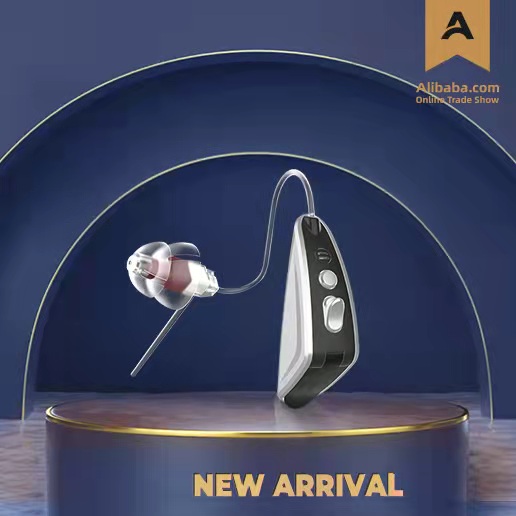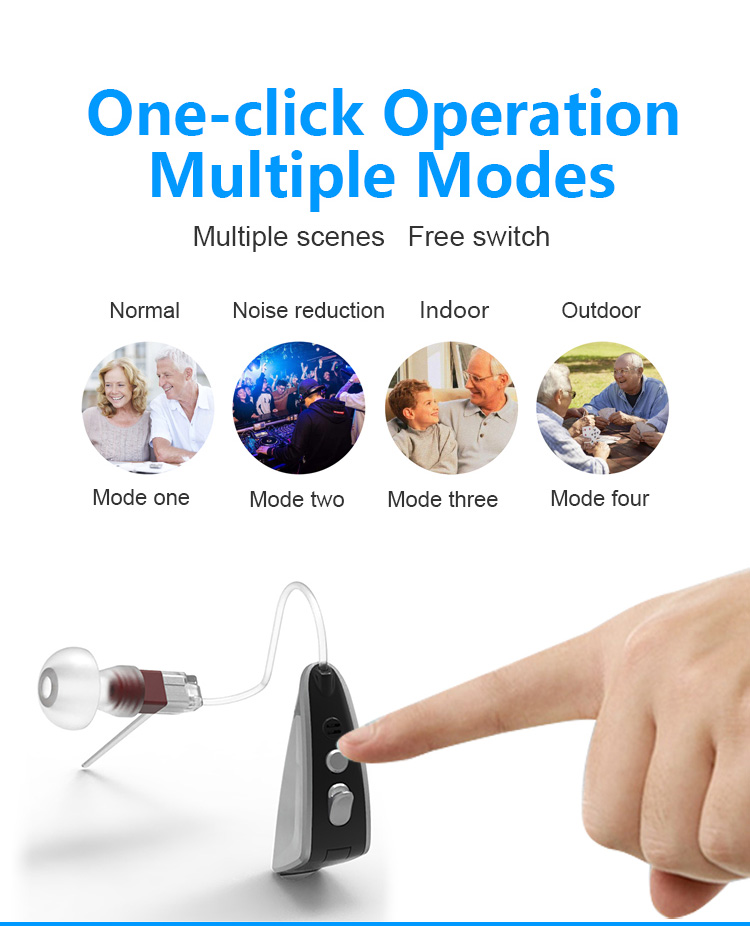
We know that microphone, amplifier, receiver can said to be the three soul parts of hearing aids.
The microphone amplifies acoustic signals, and the receiver converts the electrical signals into acoustic signals, which is the simple working principle of hearing aids.

For the hard of hearing, the daily use of hearing aids, need to pay attention to some details to make the hearing aids work properly.
It is easy to see how hearing aids work. To get a good sound without additional noise or distortion, the focus is on the microphone, including its performance and maintenance.
The performance of the microphone is selected according to the hearing loss of the hearing aids, etc. It can be adjusted in the functional grade of the hearing aid, software debugging, etc. It belongs to the work scope of professional fitting personnel.
1. Pay attention to waterproof and moistureproof.
The microphone of the hearing aid has a big fear and is afraid of water, damp gas, or perspiration type of liquid substances, this liquid intrusion, will interfere with the normal work of the microphone, thus causing the audiometer to sound muffled or silent and so on.
Fortunately, more and more back of the ear hearing aids has reached a certain degree of waterproof and dustproof level. Hearing aids are much better in terms of moisture than non-hearing aids, but custom hearing aids generally do not have water resistance.

In addition, even if the hearing aid is waterproof, it is not recommended that the hearing aid touch the water.
Because generally speaking the waterproof function of hearing aids is similar to putting a “jacket” on the hearing aid, instead of putting on an all-around waterproof “raincoat”
Recommendations
1) Often take out, mediation, and another contact with hearing aids, to ensure that no water on the hand.
2) Remove the hearing aid before swimming, bathing, washing hair, etc, and pay attention to cleaning and drying the ear canal before wearing it.
3) Avoid wearing hearing aids outside on rainy days or in high humidity environments. Use a drying kit to dry the hearing aids thoroughly after use.
2. Avoid violent collisions
-Don’t neglect the user’s own activities
The microphone in a hearing aid is designed to collect sound, but it is also sensitive to vibrations as well as sound.
The microphone’s sensitivity to vibrations can cause it to collect all the vibrations, which are amplified by an amplifier and produce an annoying noise.
Example 1
For example, the sound of the body of a hearing aid rubbing against the outside may be picked up by a microphone and heard by the user.
One of the most common examples is the cassette machine, which is placed in the bag of clothes, and the clothes are rubbed, the user will hear the “scratch” and “rustle” friction sound, which interferes with the listening.
Recommendations:
Place the cassettes in a place where they won’t rub against clothes, such as a hat. This solves the friction problem and keeps the microphone closer to the ear.
Example 2
Behind-to-ear hearing aids and custom hearing aids are worn on the ear and generally do not produce the same conditions as cassettes.
However, the hearing aid body is worn on the user after all.
If the user’s body has a violent vibration ( such as the user is on the hard ground running, jumping., etc), then the microphone will also pick up the vibration, resulting in annoying loud noise.
Recommendations:
Take the hearing aid off during strenuous exercise to avoid noise from vibrations and to avoid falling.
Example 3
Of course, in addition, the most afraid of hearing aids is direct with the external collision, such as falling on the ground, this collision is more fatal, so we often say that the hearing aids afraid of falling, can not fall.
Recommendations:
1) Sit on a sofa or bed while wearing a hearing aid;
2) For young children or elderly people with hand problems, family members can help them to wear hearing aids.
Do a good job of windproof measures.
Don’t put all your hopes in wind noise suppression
Hearing aids are worn in the ear, and when the wind blows, the wind hits an obstacle, such as the head, the pinna, or the hearing aid, and turbulence occurs.
If the microphone in the hearing aid collects the turbulence, it will produce low to medium frequency noise. That is, to hear the “hoo-hoo” wind noise, and even moderate wind speed will produce a very large sound in the microphone mouth, even making the microphone wind overload and distorted.
And might argue that hearing aids do not have wind noise suppression? Yes, some hearing aids do have a wind noise suppression function, but this function does not work for all levels of wind noise, usually only at low wind speeds.
So, often still can hear a lot of people with poor hearing, wearing a hearing aid to hear the wind is noisy, so it is better not to wear a hearing aid.
The solution is:
Recommendations:
A windshield or a little styrofoam can be attached to the microphone port of the hearing aid. It can be very effective, although it can affect the appearance a little.
Of course, in autumn and winter, it is actually more effective to wear a loose woven scarf (note that the scarf should not be too thick.
After reading these three, it is not difficult to find;
If you want a hearing aid to sound good, you have to make sure that the macgyver is working properly. The emphasis is on reducing the interference of vibration or noise ( violent collision, windproof), so that sound collected by the microphone is purer.
Do you have any tips on how to make your hearing aids sound better? Welcome to share your message.
Copyright © 2025 Guangdong ENNO Medical Technology Co., Ltd., All Rights Reserved.